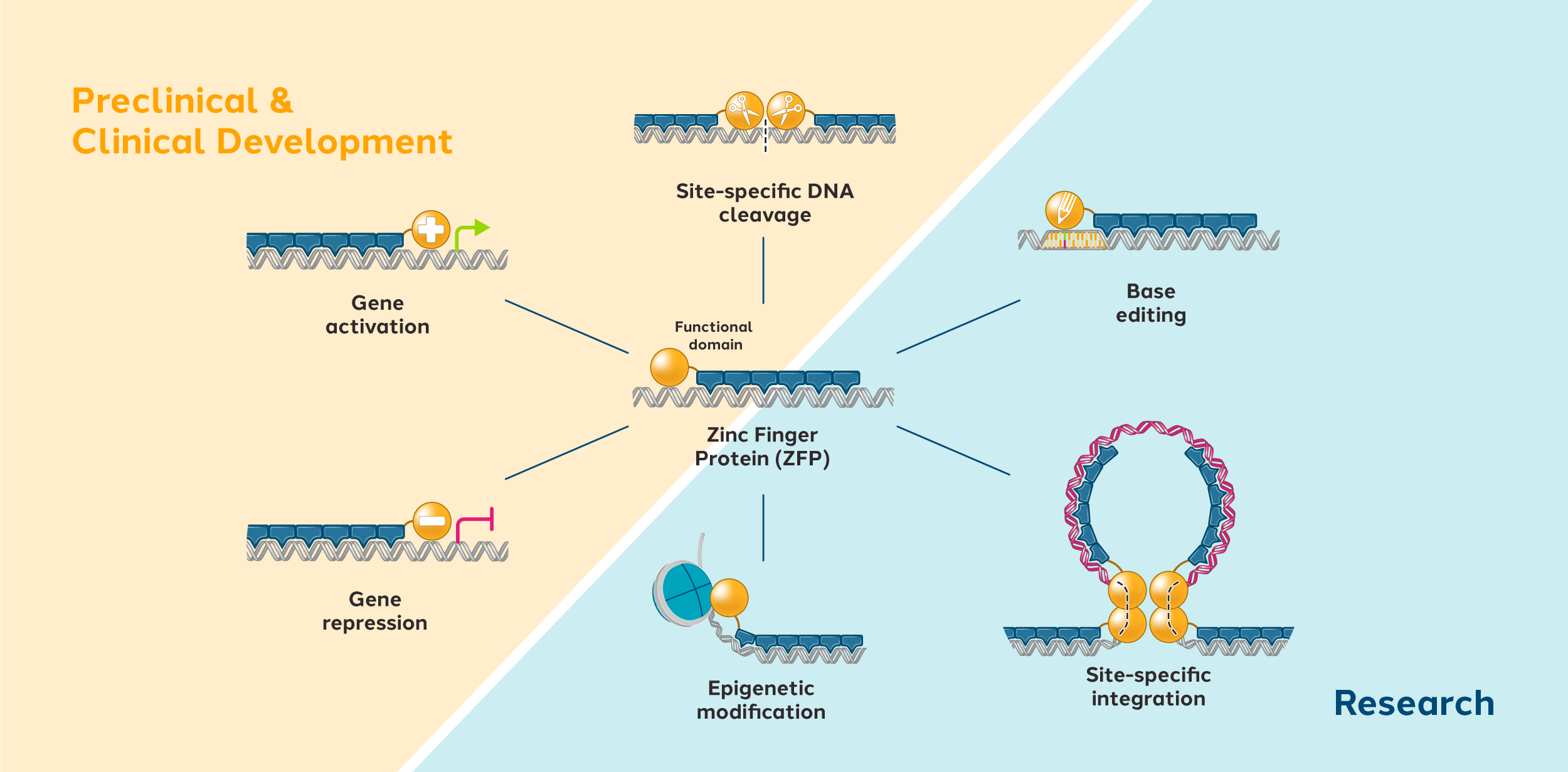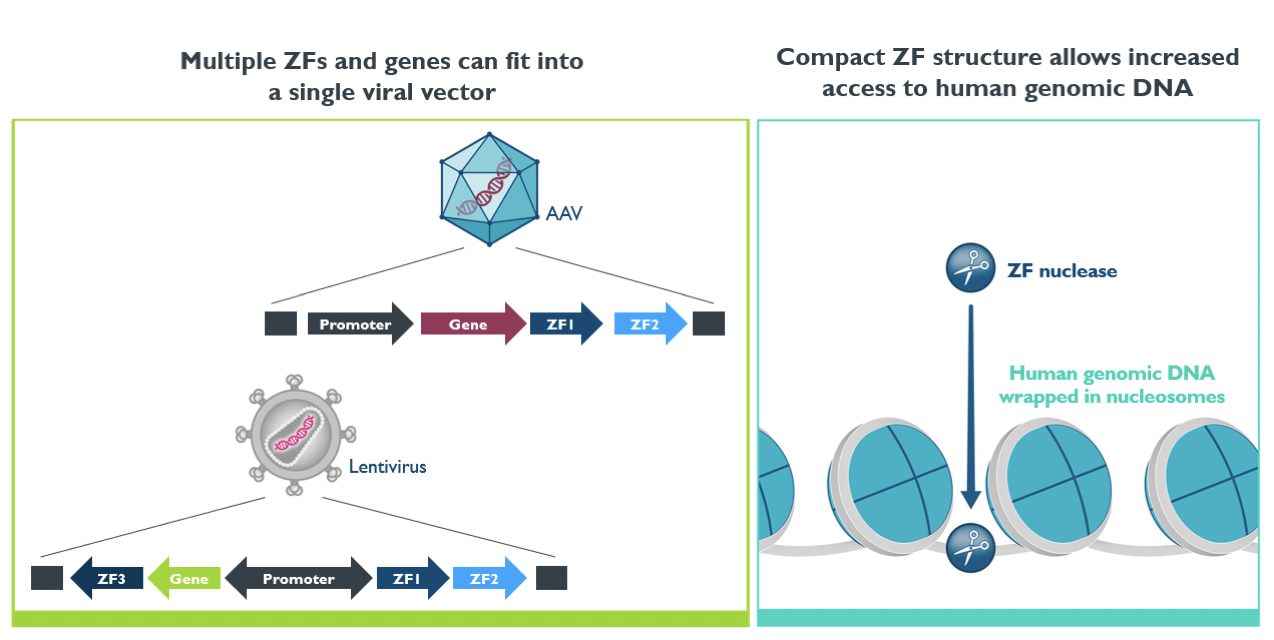
Sangamo’s ZF technologies are composed of a DNA-binding domain and a functional domain (e.g., nuclease, transcription factor).
ZF technologies are highly versatile and customizable. We can append a variety of different functional domains, allowing us to adapt and optimize the functionality based upon the specific disease of interest.

Using Sangamo’s proprietary library of thousands of zinc fingers, we can design hundreds of ZF arrays to target a desired genomic location. ZF arrays can then be fine-tuned to allow for greater activity and specificity through modifications to the DNA-protein interface. This allows us to design the optimal ZF protein for each potential therapeutic use.
In addition, ZF are compact proteins, which not only allows greater genome accessibility, but also makes them highly compatible with viral vectors, greatly improving our ability for cellular delivery.

